The Marketer’s Guide to Crafting A Successful Brand Journalism Strategy
 Is it news? Is it an ad? Look, it's brand journalism!
An ever-evolving form of marketing, brand journalism is more than a hundred years old. It dates way back to 1895, when Deere and Co. published The Furrow — a print magazine for farmers. At its peak, it reached four million readers.
In 2004, Larry Light formally coined the term “brand journalism” to describe his efforts to revamp McDonalds' public image.
Today, marketers use brand journalism to shape the narratives around their brand and industry and etch a powerful image in their consumer’s mind. Contemporary brand journalism rivals world-class news stories, both in aesthetics and quality, and it’s often produced by former, veteran journalists.
In this article, we’ll take a look at what brand journalism is, brilliant examples of the marketing form, and how it differs from content marketing. Then, we’ll take a deep dive into how you can come up with a successful brand journalism strategy for your company and essential elements for good brand journalism stories.
Hold on, we’ve got an exciting ride ahead of us.
Is it news? Is it an ad? Look, it's brand journalism!
An ever-evolving form of marketing, brand journalism is more than a hundred years old. It dates way back to 1895, when Deere and Co. published The Furrow — a print magazine for farmers. At its peak, it reached four million readers.
In 2004, Larry Light formally coined the term “brand journalism” to describe his efforts to revamp McDonalds' public image.
Today, marketers use brand journalism to shape the narratives around their brand and industry and etch a powerful image in their consumer’s mind. Contemporary brand journalism rivals world-class news stories, both in aesthetics and quality, and it’s often produced by former, veteran journalists.
In this article, we’ll take a look at what brand journalism is, brilliant examples of the marketing form, and how it differs from content marketing. Then, we’ll take a deep dive into how you can come up with a successful brand journalism strategy for your company and essential elements for good brand journalism stories.
Hold on, we’ve got an exciting ride ahead of us.
The marketer's guide to crafting a successful brand journalism strategy.
Click To TweetFirst, Download Our Helpful Brand Journalism Templates
Before you forget, download this great brand journalism kit that includes a few templates to move you along in your path to creating the best of the best brand journalism. This bundle includes:- A Content Marketing Ideas Worksheet
- A Content Marketing Strategy Template
- An Editorial Calendar Template
What is Brand Journalism?
Also known as “corporate journalism” or “corporate media”, brand journalism is the practice of using journalistic storytelling and reporting to craft compelling narratives around a brand.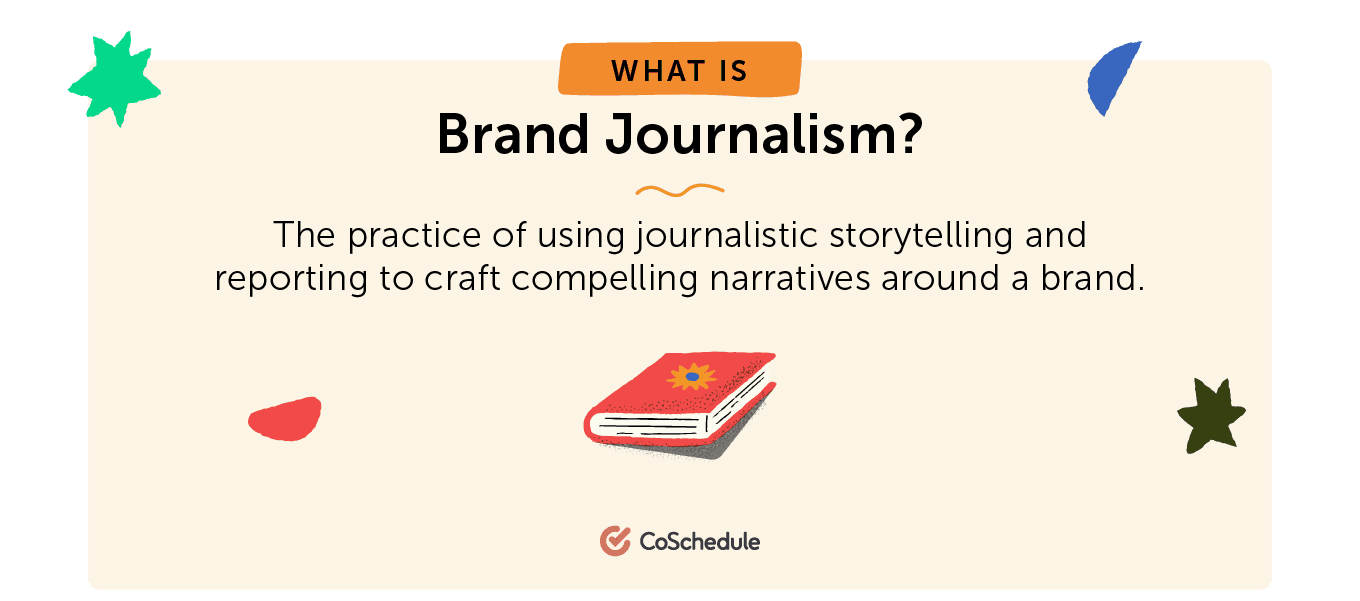 Let's take a look at a couple of definitions to better understand it.
According to LewisPR,
[Brand Journalism] is a company investing in content and becoming a provider of news. It is more, much more, than a series of press releases and product launches. Brand journalism is a serious attempt to share information and comment about an industry or sector.
Dawson Ferguson, a communications firm that has worked with Whole Foods Market and the WHO, states, “It goes beyond traditional communications and marketing to tell interesting stories about an industry, issue or cause. Brand journalism uses great writing, video, audio, and photography to tell stories. Then, it invites a two-way conversation about those stories through social media.”
Let's take a look at a couple of definitions to better understand it.
According to LewisPR,
[Brand Journalism] is a company investing in content and becoming a provider of news. It is more, much more, than a series of press releases and product launches. Brand journalism is a serious attempt to share information and comment about an industry or sector.
Dawson Ferguson, a communications firm that has worked with Whole Foods Market and the WHO, states, “It goes beyond traditional communications and marketing to tell interesting stories about an industry, issue or cause. Brand journalism uses great writing, video, audio, and photography to tell stories. Then, it invites a two-way conversation about those stories through social media.”
- It relies heavily on storytelling, reporting, interviews, and great writing.
- It can take different shapes and forms, like video, images, and audio are all fair game.
- Rather than promoting a brand directly, it aims to build a sticky brand image in an audience's mind.
Examples of Brand Journalism
Brand journalism exists in a wide range of industries, as you’ll see in the examples below.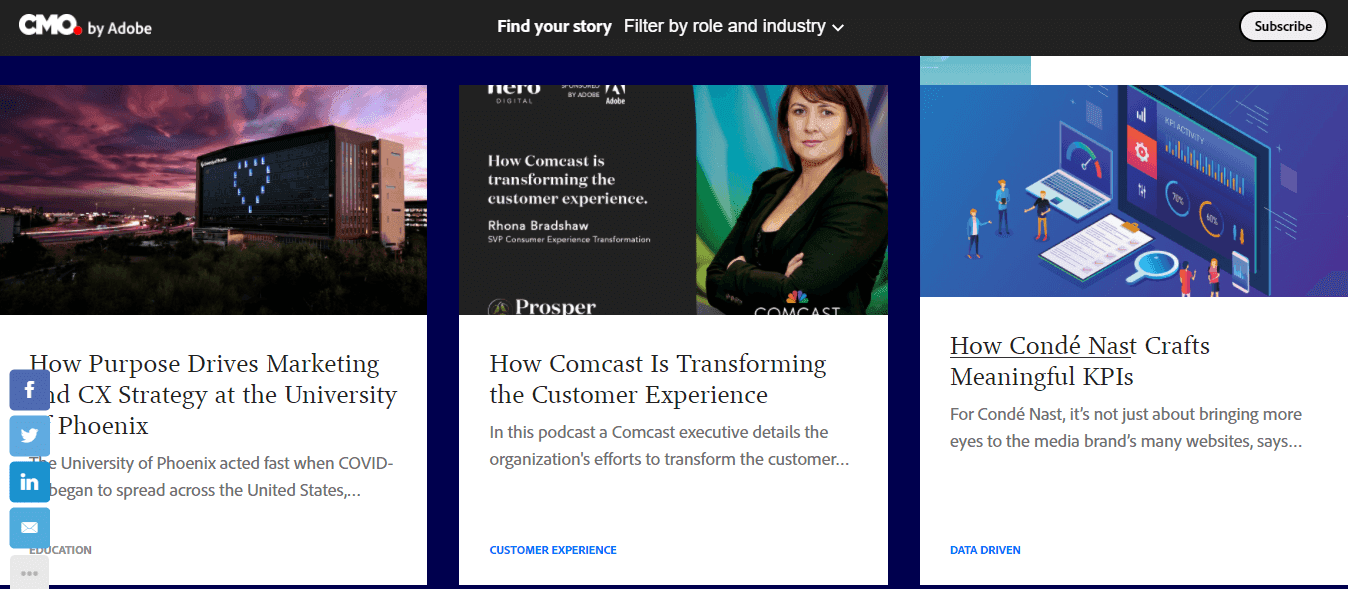 Image source: CMO by Adobe
Food and Beverages
The Journey, country-specific websites by Coca Cola
The Red Bulletin, magazine by Red Bull
SaaS
The Science of Social Media, podcast by Buffer
CMO.com, website by Adobe
Inside Intercom, blog by Intercom
Big Tech
AI:Hype vs Reality and The Next Horizon, podcasts by Dell Technologies
Microsoft News Center, Microsoft
GE Reports, General Electric
Cisco Newsroom, Cisco
Consumer Goods
MEL, digital magazine by Dollar Shave Club
Reebok blog, Reebok
Travel and Luxury
Here, quarterly travel magazine in print by Away
Southwest Airlines’ YouTube Channel, Southwest Airlines
AirBnB Magazine, AirBnB
Finance
Open Forum, American Express
Fashion
Into the Gloss, magazine by Glossier
Porter, magazine by Net-A-Porter
Venture Capital
First Round Review, magazine by First Round Capital
Logistics
Longitudes, blog by UPS
Image source: CMO by Adobe
Food and Beverages
The Journey, country-specific websites by Coca Cola
The Red Bulletin, magazine by Red Bull
SaaS
The Science of Social Media, podcast by Buffer
CMO.com, website by Adobe
Inside Intercom, blog by Intercom
Big Tech
AI:Hype vs Reality and The Next Horizon, podcasts by Dell Technologies
Microsoft News Center, Microsoft
GE Reports, General Electric
Cisco Newsroom, Cisco
Consumer Goods
MEL, digital magazine by Dollar Shave Club
Reebok blog, Reebok
Travel and Luxury
Here, quarterly travel magazine in print by Away
Southwest Airlines’ YouTube Channel, Southwest Airlines
AirBnB Magazine, AirBnB
Finance
Open Forum, American Express
Fashion
Into the Gloss, magazine by Glossier
Porter, magazine by Net-A-Porter
Venture Capital
First Round Review, magazine by First Round Capital
Logistics
Longitudes, blog by UPS
Brand Journalism vs. Content Marketing
On the face of it, brand journalism and content marketing appear to serve a similar purpose: promoting a brand. Peer closer, and you’ll notice unmistakable differences, not just in their goals, but in their approach and content planning process. Jay Rosen, author of the PressThink blog and professor at New York University, perfectly summarizes why the tenets of content marketing may not work for brand journalism. Let's comb through the finer differences between both forms of marketing.
Let's comb through the finer differences between both forms of marketing.
Approach
As Jimmy Daly explains on Animalz, good content marketing blogs are not publications, but libraries. They're an evergreen collection of closely related posts. Why? Blogs are designed to help users discover a product, and thus, rank for specific keywords. If a particular keyword is difficult to rank, content marketers will often create several posts around one topic.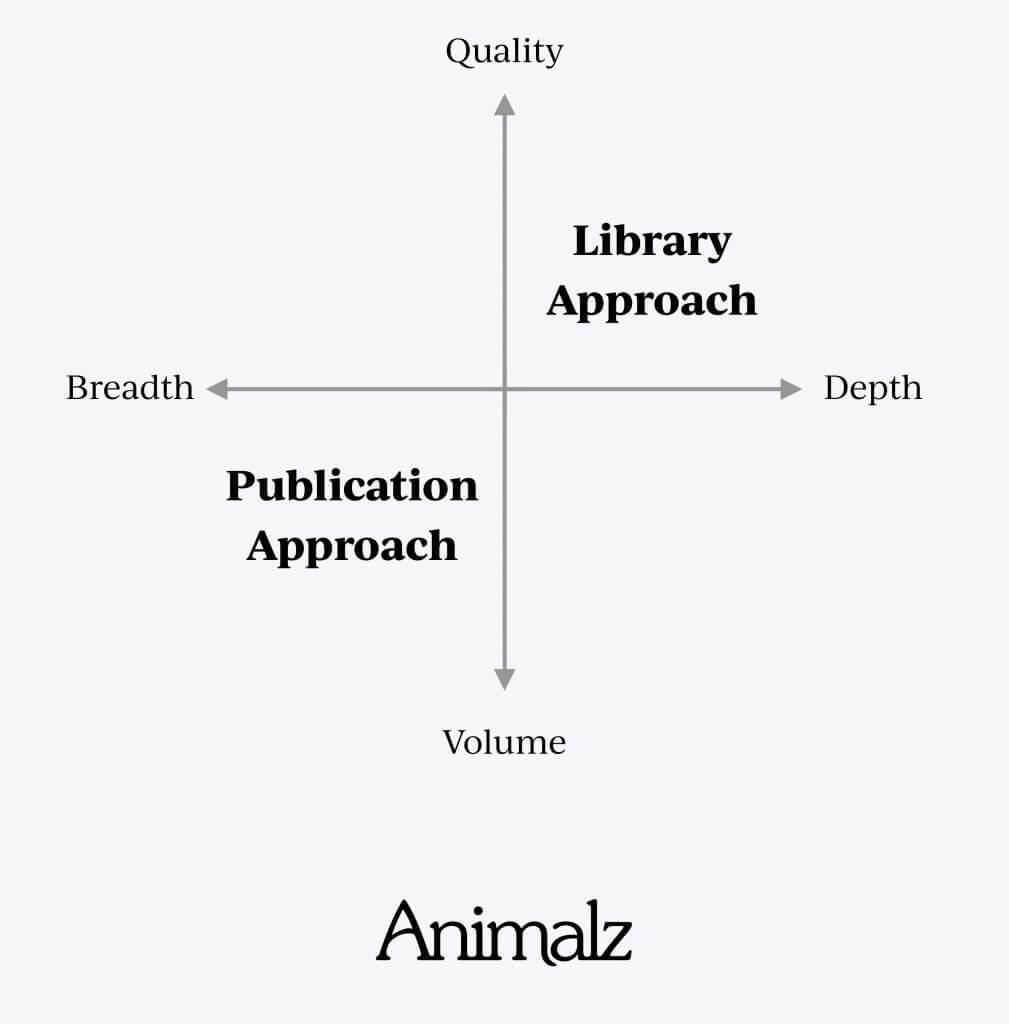 Image source: Your Blog Is Not A Publication
In essence, content marketers favor quality and depth over volume and breadth, as the image shows. This is at odds with a good publication's requirements.
To keep their audiences engaged, brand journalists must publish a wide range of content on a variety of topics. They must also ensure their articles are timely and relevant.
Image source: Your Blog Is Not A Publication
In essence, content marketers favor quality and depth over volume and breadth, as the image shows. This is at odds with a good publication's requirements.
To keep their audiences engaged, brand journalists must publish a wide range of content on a variety of topics. They must also ensure their articles are timely and relevant.
To keep their audiences engaged, brand journalists must publish a wide range of content on a variety of topics.
Click To TweetHow to Create a Successful Brand Journalism Strategy: 7 Questions That Show the Way
Successful brand journalism takes planning. Before you create a single piece of content, answer the following questions to refine your strategy and get the best results.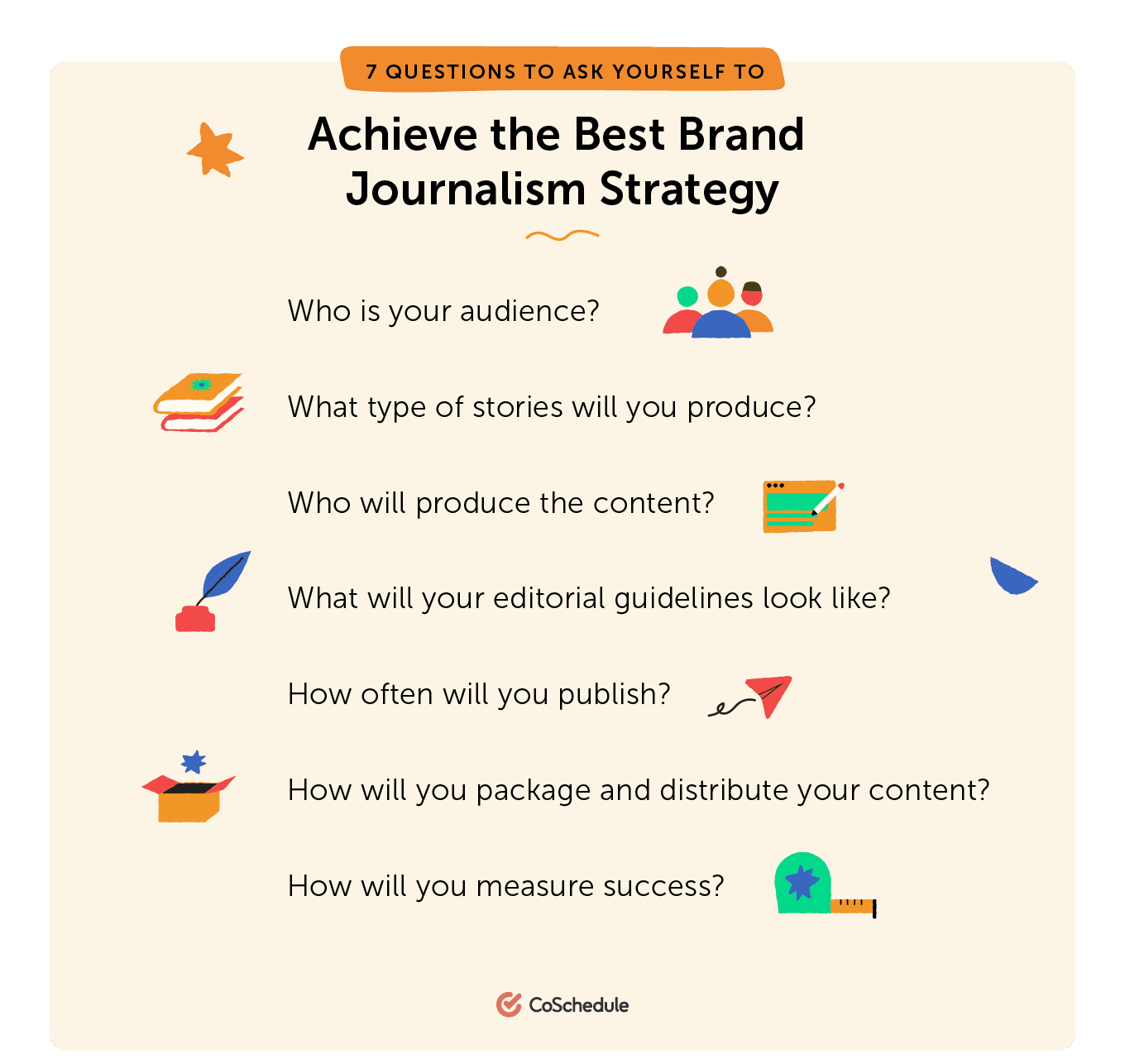
Who is your audience?
According to Larry Light, "Brand journalism involves appealing to different people with different desires in different contexts”. It's not meant to serve your customers alone. Take a look at the audience General Electric's GE Reports aims to reach: current customers, potential customers, GE employees, business partners, and technology enthusiasts. Your audience should be the starting point of your brand journalism strategy. It gives you a content niche to focus on. Once you've identified who you're writing for, it's time to analyze their needs and challenges.Once you've identified who you're writing for, analyze their needs and challenges.
Click To TweetWhat type of stories will you produce?
While your audience provides you with a general idea of which topics are okay and which ones are a no-go, you'll need to narrow down the type of stories you'll cover. First, let's go over the many shapes and forms brand journalism takes: Brand stories These pieces focus on innovations and initiatives taken by a brand. They work best if you're doing groundbreaking work in your field that's newsworthy. For example, GE Reports frequently chronicles tales, such as a farmer using their LED lights to grow crops. In turn, it earns them coverage from publications, such as The Washington Post and Gizmodo. Industry trends In this form, stories usually comment on current trends and events in a niche, with little to no reference to a brand or product.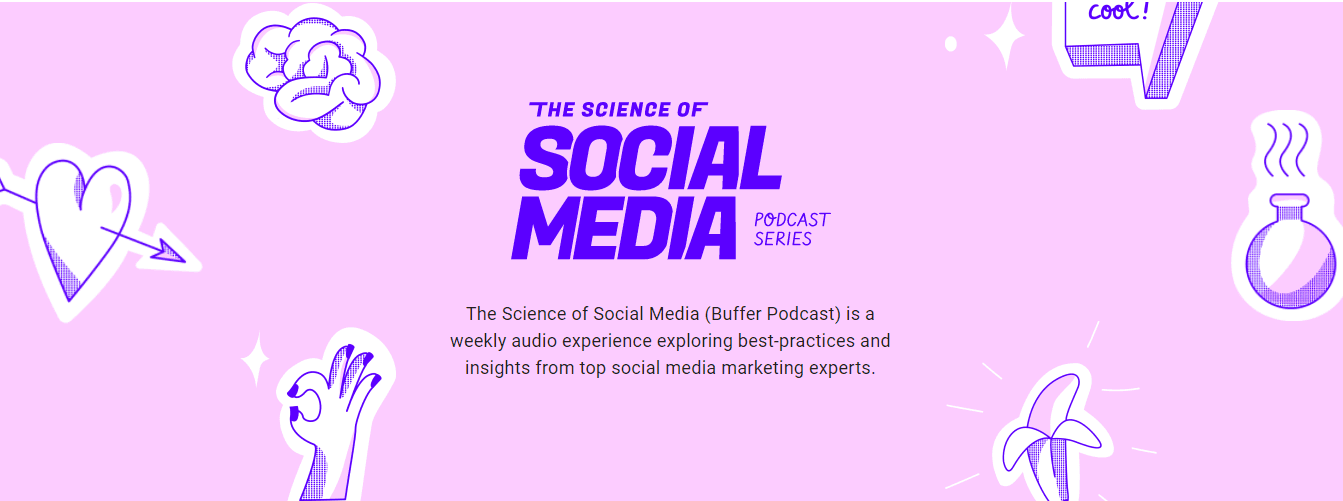 Image source: The Science of Social Media
For example, Buffer's, The Science of Social Media, podcast covers trends in social media such as the rise of social commerce and algorithm changes on popular platforms.
Curated content
If there's a lot of great content already being created in your niche, you might serve as an expert curator to help filter out the noise. That's exactly what CMO.com does. The website is a way for Adobe to position itself as a one-stop-shop for the best marketing advice. It curates articles from websites such as Wired, Mashable, and Advertising Age.
Pop culture
Consumer brands are well-positioned to drive inspiration from pop culture trends. Coca Cola's Journey sites often look to events such as the Oscars and World Water Day to plan content.
Another great example is Dollar Shave Club’s MEL, a men’s lifestyle magazine that writes about masculinity and the modern male.
We’ve covered the various types of stories, but which of these will best represent your brand? Which of these are you in the best position to create? Most importantly, how can you stand out from existing blogs, websites, and media in your niche?
Here are some ways you can zero in on the best types of content for your brand:
Image source: The Science of Social Media
For example, Buffer's, The Science of Social Media, podcast covers trends in social media such as the rise of social commerce and algorithm changes on popular platforms.
Curated content
If there's a lot of great content already being created in your niche, you might serve as an expert curator to help filter out the noise. That's exactly what CMO.com does. The website is a way for Adobe to position itself as a one-stop-shop for the best marketing advice. It curates articles from websites such as Wired, Mashable, and Advertising Age.
Pop culture
Consumer brands are well-positioned to drive inspiration from pop culture trends. Coca Cola's Journey sites often look to events such as the Oscars and World Water Day to plan content.
Another great example is Dollar Shave Club’s MEL, a men’s lifestyle magazine that writes about masculinity and the modern male.
We’ve covered the various types of stories, but which of these will best represent your brand? Which of these are you in the best position to create? Most importantly, how can you stand out from existing blogs, websites, and media in your niche?
Here are some ways you can zero in on the best types of content for your brand:
- Look for content gaps: VC firm, First Round Review, noticed there was a dearth of in-depth, how-to advice in the startup space from real practitioners such as product designers, engineers, and marketers. Thus, the First Round Review was born.
- Listen to your customers: Undoubtedly, your best stories will come from your customers. Be obsessive about tracking them. What does a day in their life look like? Have they had incredible experiences with your product that others would find interesting? Document them.
- Tap into your existing network: First Round Review has access to a broad network of technology innovators through their portfolio companies and the startup community at large. Similarly, a fashion brand may have access to a team of in-house stylists, producers, and buyers they can tap into for stories.
Who will produce the content?
A majority of brand journalistic ventures are managed by in-house teams (82%), as per a 2016 survey by NewsCred. A number of marketers polled also considered in-house teams as best suited for this role. Why? Because they tend to have a better understanding of a brand and can help differentiate it. The survey also found that a team of in-house brand journalists typically consists of three to five members. In terms of roles, these teams are made up of editorial directors, chief content officers, and content managers. When putting your own team together, look for candidates with at least some journalistic experience. This will ensure they are skilled at storytelling, reporting, interviewing, and writing — all important qualities for a brand journalist. It also helps if they have a strong understanding of your business.When putting your own team together, look for candidates with at least some journalistic experience.
Click To TweetWhat will your editorial guidelines look like?
Editorial guidelines help maintain consistency across everything you publish. They also serve as a guiding light for both in-house and guest contributors. Importantly, they lend a sense of familiarity to your publication, so the audience knows what to expect. Rather than focus on syntax and grammar rules, your editorial guidelines should set the tone for each piece, determine what the end goal for your content is and establish some ground rules. Take a look at First Round Review’s content manifesto: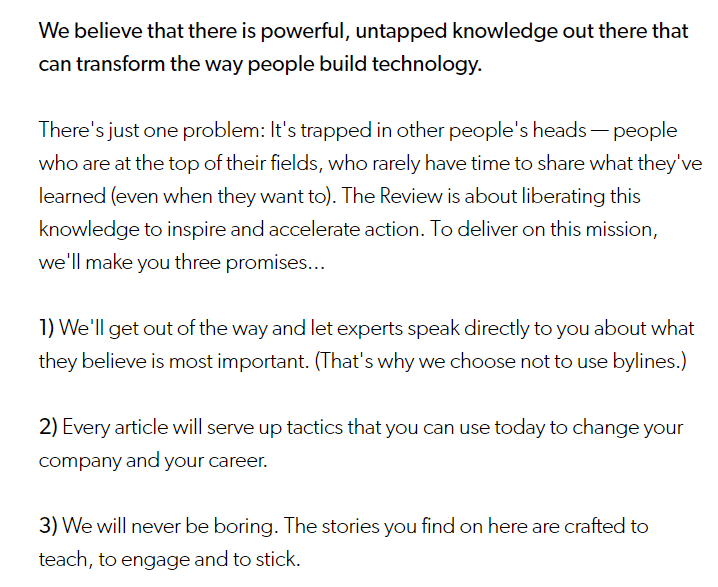 Image source: First Round Review
Here are a few questions to help come up with your own guidelines:
Image source: First Round Review
Here are a few questions to help come up with your own guidelines:
- How do you want the reader to feel at the end of each piece?
- What will the tone of your publication be like?
- Which topics are out of bounds?
- Which research sources are valid?
- How will you attribute sources?
How often will you publish?
A consistent publishing cadence keeps your team focused, while also setting readers’ expectations. In our research, we found most brand journalistic websites publish three to four stories per week. Larger teams, such as GE Reports, might also publish 10 to 20 stories per week. Print magazines usually publish an issue each month, while some are published on a quarterly basis. Pick a publishing schedule that’s realistic for your team and relevant for your niche. Remember, quality trumps quantity. A handful of high-quality stories are better than cranking out a pile of mediocre content no one wants to read.How will you package and distribute your content?
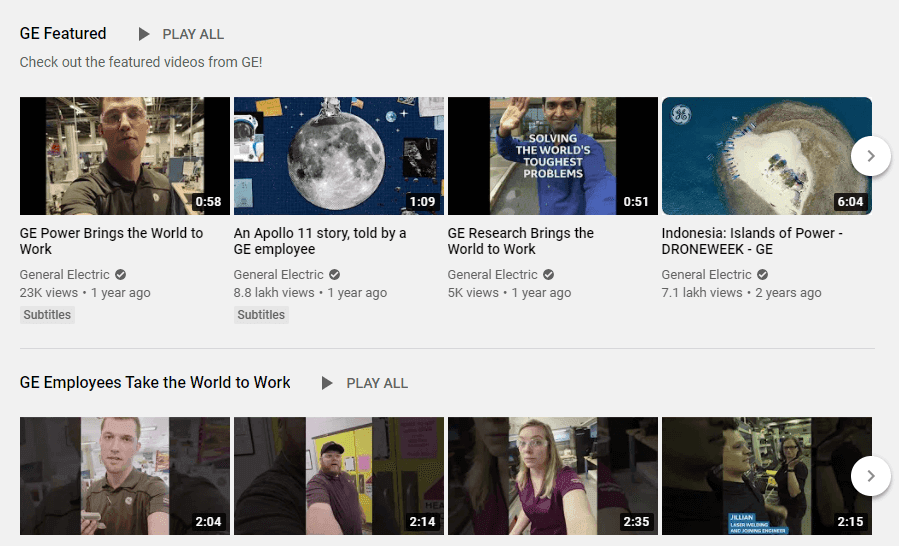 Image source: General Electric YouTube
As media continues to evolve, packaging and distribution of content often go hand in hand.
There are a couple of points to consider when packaging your content. First, let's talk about content formats. At present, brand journalism exists in many forms: blogs, stand-alone websites, podcasts, video series, newsletters, and print publications.
Before you set out to produce content, take a moment to visualize how you can best convey your story to the audience. Would they prefer listening to your story on their morning run? Are they more likely to get immersed in an exhaustive written feature, or is video the best way to showcase your piece?
Often, a single story will need multiple elements to enhance its impact, so you might have to produce a story accompanied by high-resolution images and short video clips.
A word about visuals: For a content marketing blog, such as this one, it might be okay to create custom graphics and images, but brand journalism stories are best supported by real images and photography.
When it comes to distribution, print magazines can sell a subscription at a nominal fee and also offer the magazine for free to buyers and partners. Both Away (Here) and AirBnB (AirBnB Magazine) do this with their publications.
For an exclusively digital venture, here are a couple of ideas for content distribution:
Email list
Send your content to your email list, if you have one. Existing customers and subscribers are the best sources of initial feedback for your content.
Social media
As varied as social media platforms are, each offers a unique opportunity to repurpose and promote your content. Take a look at how General Electric uses social media to amplify their brand. Their Instagram account has a whopping 427K followers, while on YouTube, they have over 2,000,000 subscribers.
Image source: General Electric YouTube
As media continues to evolve, packaging and distribution of content often go hand in hand.
There are a couple of points to consider when packaging your content. First, let's talk about content formats. At present, brand journalism exists in many forms: blogs, stand-alone websites, podcasts, video series, newsletters, and print publications.
Before you set out to produce content, take a moment to visualize how you can best convey your story to the audience. Would they prefer listening to your story on their morning run? Are they more likely to get immersed in an exhaustive written feature, or is video the best way to showcase your piece?
Often, a single story will need multiple elements to enhance its impact, so you might have to produce a story accompanied by high-resolution images and short video clips.
A word about visuals: For a content marketing blog, such as this one, it might be okay to create custom graphics and images, but brand journalism stories are best supported by real images and photography.
When it comes to distribution, print magazines can sell a subscription at a nominal fee and also offer the magazine for free to buyers and partners. Both Away (Here) and AirBnB (AirBnB Magazine) do this with their publications.
For an exclusively digital venture, here are a couple of ideas for content distribution:
Email list
Send your content to your email list, if you have one. Existing customers and subscribers are the best sources of initial feedback for your content.
Social media
As varied as social media platforms are, each offers a unique opportunity to repurpose and promote your content. Take a look at how General Electric uses social media to amplify their brand. Their Instagram account has a whopping 427K followers, while on YouTube, they have over 2,000,000 subscribers.
 On both of these channels, they engage viewers with videos, such as “An Apollo 11 Story, Told by a GE Employee” and “The Trade War on Wind”. On Snapchat, GE shares videos on experiments, such as the alcohol rocket.
On both of these channels, they engage viewers with videos, such as “An Apollo 11 Story, Told by a GE Employee” and “The Trade War on Wind”. On Snapchat, GE shares videos on experiments, such as the alcohol rocket.
How will you measure success?
While it's hard to put a numerical value on how people feel about your brand, it helps to have tangible ways to gauge whether you’re headed in the right direction. Currently, brands use a combination of traffic and social media shares to track success. For their Journey sites, Coca Cola assigns an Expressions of Interest (EOI) score to each piece. This metric captures engagement around a post by looking at a few factors: referrals from social media, shares, SEO traffic, and total visits. To measure reader interest in a story, they track pageviews. A few brand journalism pieces might also directly generate business. For example, Microsoft’s story, “88 Acres: How Microsoft Quietly Built the City of the Future,” drove 500,000 views for their website and also bagged a few clients who wished to design their facilities like Microsoft’s. GE Reports measures success by looking at traffic, the number of links a piece generates, the quality of the links, and the number of publications that pick up their content. To date, their work has been picked up by publications such as New Scientist, Wired, and Fast Company. While there’s no exact formula for measuring the impact of brand journalism, you’ll need to keep a tab on the following metrics: Traffic How many people are viewing your content? If the number stands low, you may need to ramp up your promotion efforts. Do you have repeat visitors? If so, it indicates high engagement. Bounce rate Which pages have the highest bounce rate? Which ones have the lowest? Those are topics you want to explore further. Social shares Are people chattering about your content online? Why or why not? Which topics seem to resonate? Which ones draw a blank? Publications The media is always hungry for new stories, and if you publish intriguing ones, they’re sure to get picked up. Are reputed publications picking up your stories? If not, you might need to raise the bar in terms of quality or reevaluate your topics.Essentials for Brand Journalism: 4-Step Checklist for Marketers
There's no magic bullet to guarantee your stories will taste viral success. There are, however, a few common elements of every brilliant piece of journalism, even if it's for a brand. Here's a handy checklist to run each of your pieces by.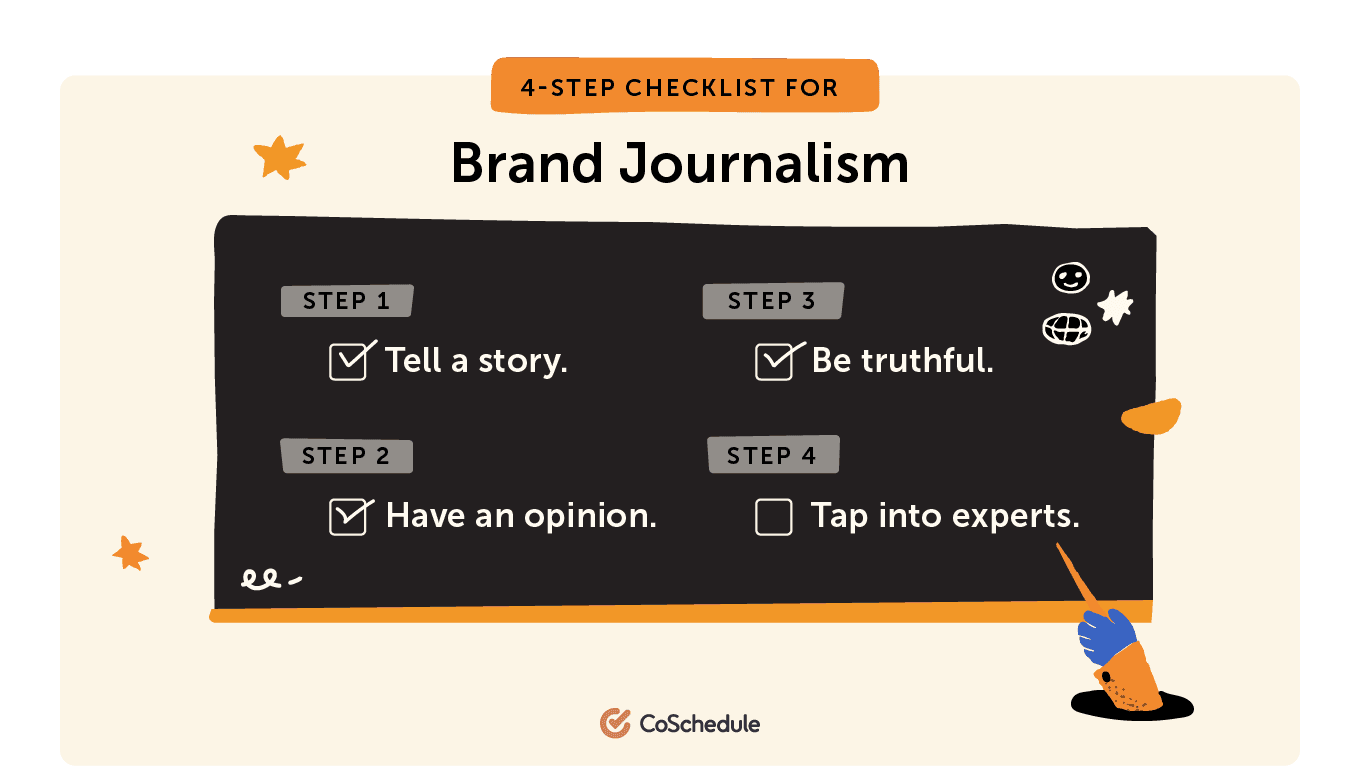
Tell a story
Stories are at the heart of journalism, they make it interesting and memorable. As a content marketer, you may not have much room to build narratives in your work, but as a brand journalist, stories are your heroes. According to the American Public Institute’s Journalism Essentials, the following is true for all good stories:- How a story is told is more important to the audience than its topic.
- The best stories are more complete and more comprehensive. They contain more verified information from more sources with more viewpoints and expertise.
- A profile: These stories are generally driven by a single person, event, or place.
- Explanatory piece: These stories might explain how your product functions or how you built certain features.
- Issues and trends: These stories comment on upcoming trends in an industry. They must be timely and relevant.
- Investigative: These pieces give you the opportunity to take a stance. Why is something deemed good or bad? Go behind the scenes, analyze evidence, and present your findings.
- Narrative: These stories focus on the experiences of your customers, employees, and industry professionals.
- Descriptive/Day in the Life: Similar to narratives, these stories delve deep into particular moments, such as a pivotal launch or a behind-the-scenes for a specific product.
- Voices/perspectives: These stories use multiple discussions, vignettes, and quotes to make a case.
- Visual: Stories best suited for graphics, illustrations, and photographs fall into this category.
Have an opinion
Take a look at these headlines from MEL:- Scientifically Speaking, Which Sport Has the Fittest Athletes?
- We Were All Rooting for America’s Next Top Model. Now We’re Holding It Accountable
- YouTube Has An Animal Abuse Problem, Putting Cats and Dogs at Risk
 How can you produce stories with an opinion? A few ideas:
Support your community
What causes does your audience care about? Support them wholeheartedly, in both your actions and content.
Challenge the status quo
What are some commonly held beliefs in your industry? Are some of them wrongly held to be true? Can you provide a better alternative? You've got an interesting story.
Do rigorous research
To recommend only the best product to their audience, the Wirecutter team spends tens of hours testing a product and talking to professionals in the field. This obsession sets them apart from other review sites that merely lump together a bunch of generic lists. In a world where “top 10 best” lists are a dime a dozen, research offers a way for you to develop and express exclusive opinions.
How can you produce stories with an opinion? A few ideas:
Support your community
What causes does your audience care about? Support them wholeheartedly, in both your actions and content.
Challenge the status quo
What are some commonly held beliefs in your industry? Are some of them wrongly held to be true? Can you provide a better alternative? You've got an interesting story.
Do rigorous research
To recommend only the best product to their audience, the Wirecutter team spends tens of hours testing a product and talking to professionals in the field. This obsession sets them apart from other review sites that merely lump together a bunch of generic lists. In a world where “top 10 best” lists are a dime a dozen, research offers a way for you to develop and express exclusive opinions.
Be truthful
Brands can hardly inspire trust and confidence among their audience if they are not upfront about sponsorship or attempt to hide critical facts in their stories. Content marketing platform, Contently, suggests brands follow a Code of Ethics when creating content. It states brand journalists must:- Adhere to journalism’s core values of honesty, integrity, accountability, and responsibility.
- Acknowledge facts that may compromise the integrity of a story or opinion
- Expose truth as fully as possible.
- Always credit sources of content or ideas, never plagiarizing or repurposing stories or prose, whether one’s own or another’s, whether written content, photography, or other media, whether the original source is known or not.
- Ensure that the reader understands the source, sponsor, and intent of the content.
- Disclose all potential conflicts of interest or appearance of conflict.
Tap into experts
Subject matter experts help journalists break down complex topics and provide insights based on real world experience. Without the trained eye of a professional, much of a brand journalist’s work can end up feeling like marketing, re-hashed from Google results. Just as a good journalist must nurture valuable sources for their stories, so should brand journalists.Just as a good journalist must nurture valuable sources for their stories, so should brand journalists.
Click To Tweet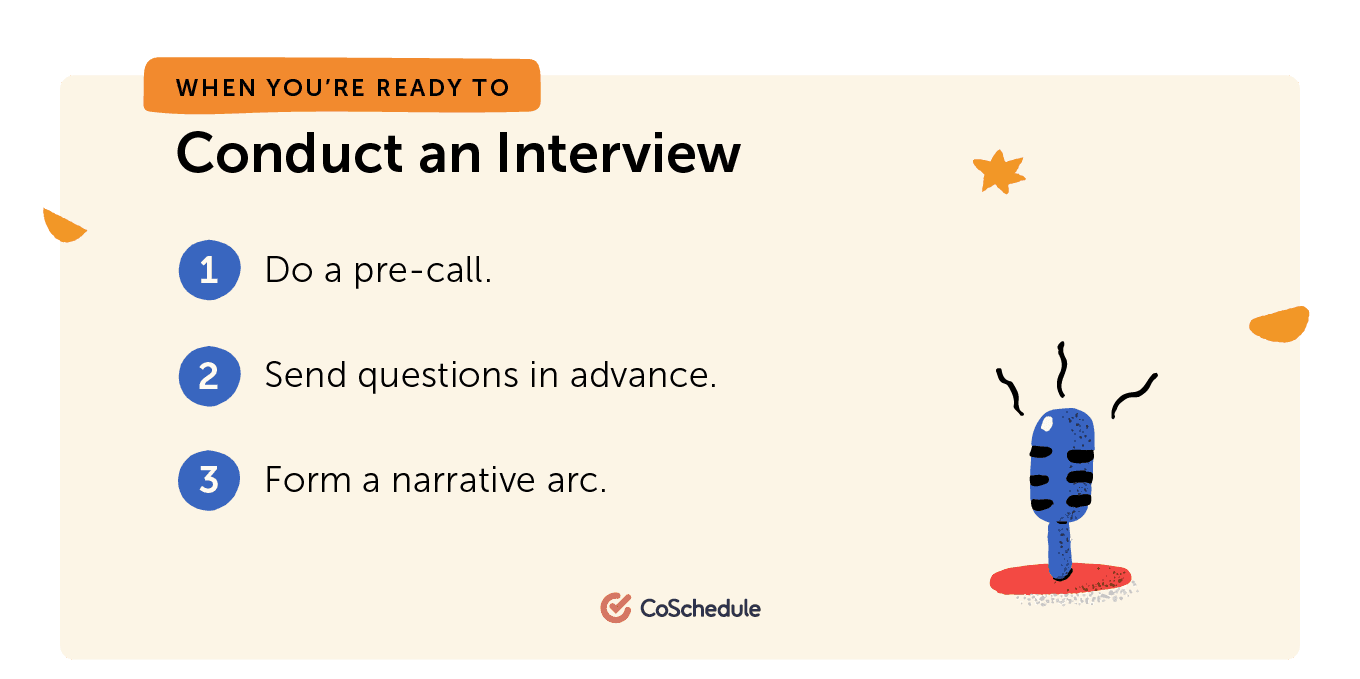 Camille Ricketts, who routinely did this at First Round Review, offers some great advice:
Camille Ricketts, who routinely did this at First Round Review, offers some great advice:
- Do a pre-call: Before the actual interview, get on a quick call with your subject. This session will help you zoom in on an interesting topic for your readers, and one that your subject is passionate about.
- Send questions in advance: This helps the subject give some thought to their answers, instead of jumping in the interview unprepared.
- Form a narrative arc: The best way to suss out an interesting story from your subject is to frame questions in a narrative arc right at the beginning. This helps you answer when the story begins and how you will end the piece.


